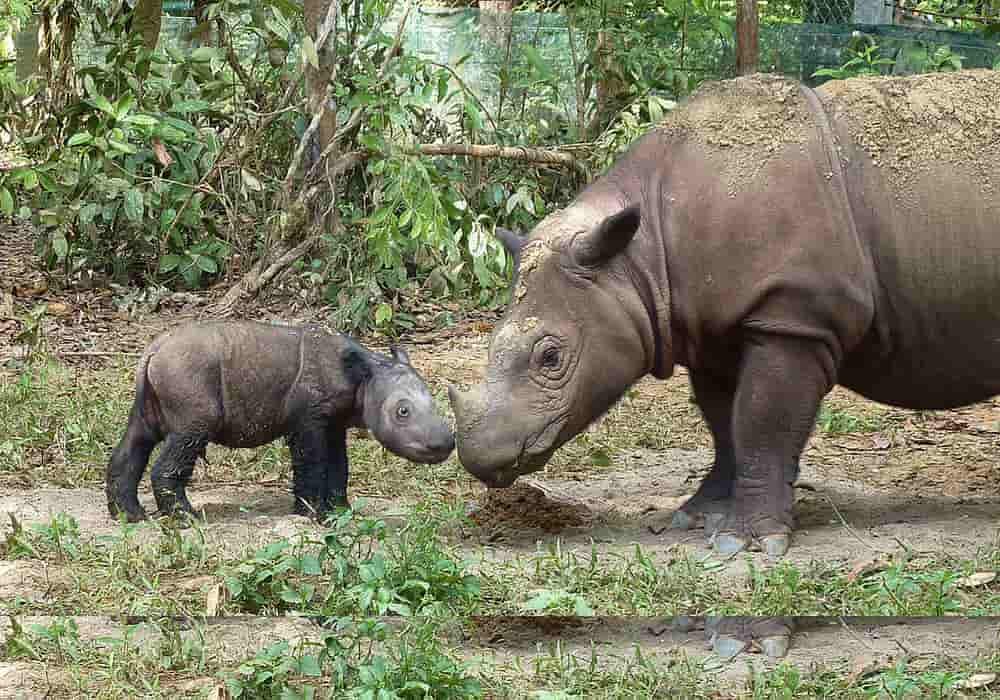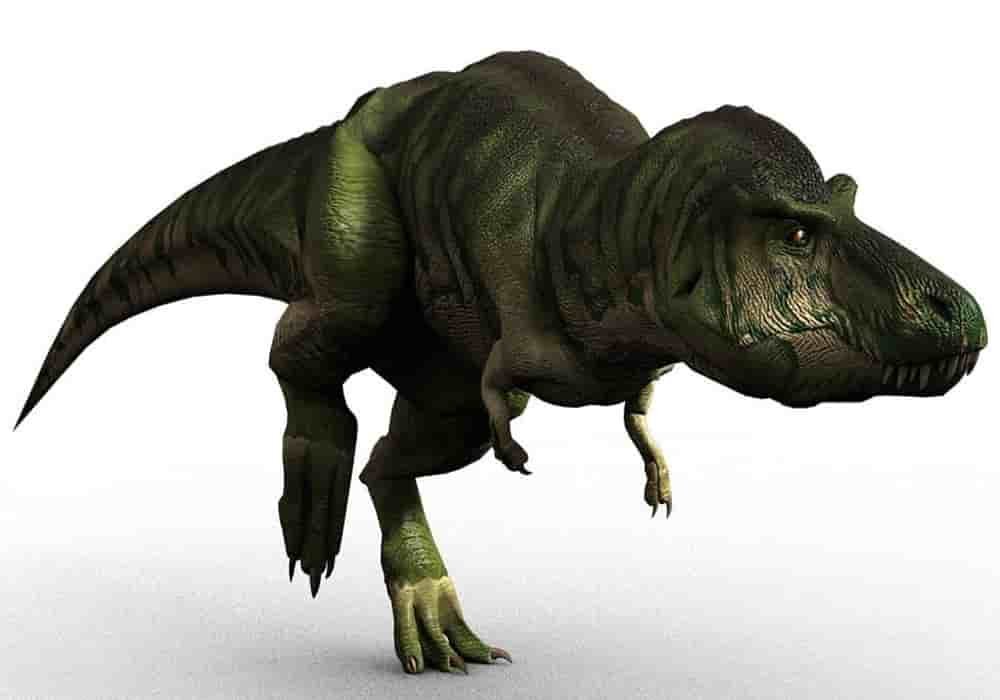Rhinoceros
Physical description: the rhinoceros is a herbivorous mammal of the Rhinocerotidae family. The animal is around 13.1 ft (4m) long and 6.5 ft (2m) high. Its weight can reach 3 tons (6000 pounds). According to the origin of the word, the rhino is an animal with horns on its nose. The large mammal has, at the end of the muzzle, one or two horns depending on the species.
In addition, the rhinoceros has short but huge legs. His foot has three toes that end in a claw. The animal is endowed with incredible strength due to its large muscle mass: it can run up to 31 mp/h (50 km/h). It has a thick skin of gray or brown color.
List of Rhinoceros Species
To date, there are only five different species of rhino.
White rhino
Ceratotherium simum
2 horns
Length: 13.1 ft (4m)
Height: 5.9 ft (1.80m)
Weight: 3086 lbs (1400kg) to 7716 lbs (3500kg)
Black rhinoceros
Diceros bicornis
2 horns
Length: 11.48 ft (3.5m)
Height: 5.25 ft (1.60m)
Weight: 800 to 1500 kg
Sumatran rhinoceros
Dicerorhinus sumatrensis
2 horns
Length: 9.8 ft (3m) to 12.5 ft (3.80m)
Height: 3.28 ft (1m) to 4.9 ft (1.50m)
Weight: 1763 lbs (800kg) to 5952 lbs (2700kg)
Java rhinoceros
Rhinoceros sondaicus
1 horns
Length: 6.5 ft (2m) to 13ft (4m)
Height: 4.9 ft (1.50m) to 5.6ft (1.70m)
Weight: 1984 lbs (900kg) to 5071 lbs (2300kg)
Indian rhinoceros
Rhinoceros unicornis
1 horns
Length: 13.1 ft (4m)
Height: 5.75 ft (1.75m) to 6.5 ft (2m)
Weight: 3086 lbs (1400kg) to 7716 lbs (3500kg)
His place of life
The rhino is present in a large part of the world, namely: in Africa, Sumatra, Borneo, India, Vietnam, Nepal as well as Java. Its natural environment is above all the savannah. It is a generally solitary animal.
There are different types of rhinoceros depending on their location.
His diet
The rhino, as a herbivore, is an animal that feeds on leaves, grasses, and plants and fruits.
His life expectancy
The rhino can live 35 to 50 years depending on its species.
His shout
Like the elephant, the rhino gives a trumpet sound: it is said to trumpet or barb. The animal may also growl or sniffle.
Particular signs
It is the largest current land mammal, after the elephant. He does not see very well, but he has a very developed hearing and smell. Rhinos sleep during the day and are active at night.
Preservation status
If the white rhino is not threatened, the black rhino is in danger of extinction. As for the one-horned rhinoceros of India, it is considered “Vulnerable”. Rhinos are currently in the reintroduction phase in different parts of the world.
Reproduction
Rhinos normally live in solitary confinements, but in the savannah you can sometimes see small herds. If a female is in heat, the males can get into a fight. The winner woos the female in a curious way: he marks his territory with urine and droppings, spinning his tail like a fan to spread over a larger area. Additionally, both mates chase and fight each other before mating.
After a gestation period of between 15 and 18 months, the female gives birth to a single baby that will stay with her for two years. He follows his mother like his shadow. She is then especially aggressive and even defends him against members of his species, but when the next one is born, she drives him away.
Regardless of gender, rhinos are polygamous and polyandrous, meaning that they can live with multiple mates. In order to mate, males can go so far as to fight. Then, before mating itself, the mates chase each other and fight again.
To be able to give birth to a small rhino, the female begins a gestation period of 15 to 18 months. The young and the mother are inseparable for two years or more.
Photo source of Sumatran rhinoceros: Wikimedia Commons



